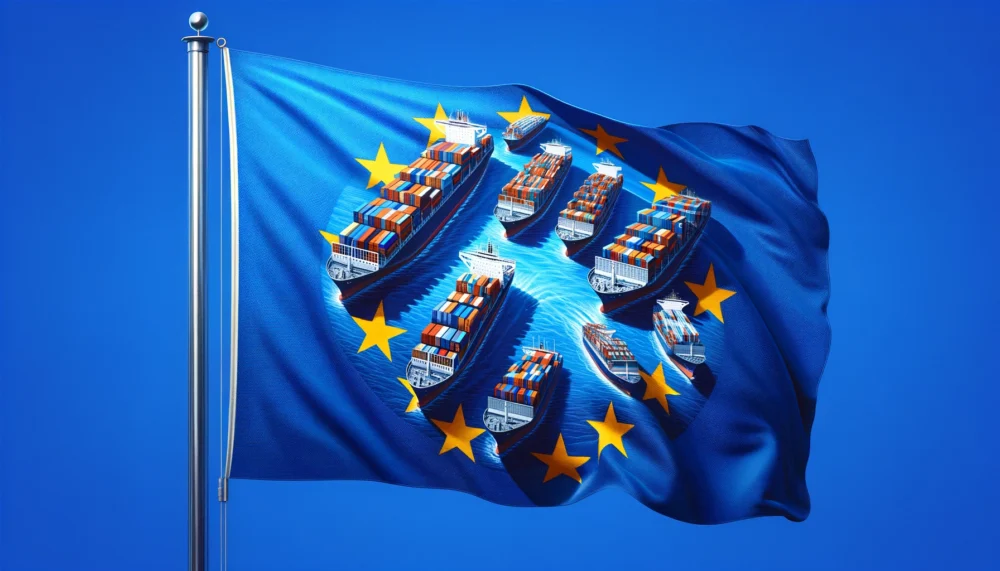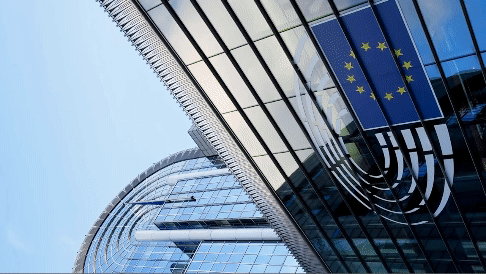
How Europe’s green taxonomy will help decarbonize shipping
The European Union does not like greenwashing. That is why it establishes which activities are understood as sustainable and seeks to channel capital towards investments with a real impact on the climate and the environment. These new criteria are intended to encourage the use of alternative fuels in maritime traffic, the electrification of ports and the improvement of rail connections.

The green transition starts in your pocket
The adoption of "a common language that investors can use to invest in projects and economic activities with a positive and substantial impact on the climate and the environment".
With something as simple and yet as complex as establishing a European green taxonomy or classification, the EU countries want to "improve the flow of capital towards sustainable activities". The ultimate goal is to make "Europe climate neutral by 2050 and to protect, conserve and enhance natural capital and biodiversity".
Why language for investors?
Well, because Brussels is well aware that meeting climate and environmental objectives requires "a significant private investment component". In this regard, the EU taxonomy (EU Regulation 2020/852) attempts to direct capital to activities necessary to achieve greenhouse gas emission neutrality.
"There are many incentives for decarbonization, such as the Green Deal or REPowerEU. The machinery is already in place. The taxonomy aims to accelerate decarbonization, directing investment towards those projects that are a real priority," explains Héctor Calls, head of environmental sustainability at the Port of Barcelona.
Calls is convinced that the taxonomy "can help the maritime transport sector a lot, with investments in alternative fuels, the electrification of ports and the improvement of rail connections".

Decarbonization in the maritime sector
The taxonomy is a continually evolving process, which is updated as new agreements are reached. In one of the latest updates, the technical selection criteria for freight and passenger shipping have been modified to adapt them to the decarbonization criteria adopted by the International Maritime Organization (IMO) and the European Union, which will be applicable as of January 1, 2025.
IMO's revised strategy is more ambitious in terms of greenhouse gas reduction. It envisages a reduction in the carbon intensity of international shipping by at least 40% by 2030. Finally, it plans to reach net-zero emissions by 2050 at the latest, or around that year. It bases the achievement of these targets on the adoption of zero or near-zero greenhouse gas emitting energy sources, fuels and/or technologies. According to the plan, these should reach 10% of the energy used by international shipping by 2030.
In line with the IMO, the Council of the European Union has adopted a new Regulation to decarbonize the maritime sector, which is based on the initiative known as FuelEU Maritime. The main objective of FuelEU Maritime is to increase the demand for and systematic use of renewable fuels and low-carbon fuels to reduce greenhouse gas emissions from the maritime transport sector.

What is sustainable according to taxonomy?
The taxonomy consists of a set of robust definitions and transparent disclosure requirements elaborated by experts and scientists that, broadly speaking, aim to unmask greenwashing. The ultimate decision, however, remains with capital because the taxonomy does not mandate investment or divestment in any company, technology or economic field. .
Its development dates back to 2016, when the first group of experts began work .
These experts have established a set of standards and criteria that establish and define which activities are considered sustainable. In this sense, it allows (or requires, in certain cases) companies to calculate how green their activities are.
An activity is considered "sustainable" for the purposes of the taxonomy if it meets the following four conditions:
- Substantially contributes to at least one of these environmental objectives:
- adaptación al cambio climático;
- climate change mitigation;
- adaptation to climate change;
- sustainable use of water and marine resources; transition to a circular economy;
- pollution and waste prevention and control;
- protection and rehabilitation of biodiversity and ecosystems.
- Does not cause significant harm to any of the other five environmental objectives.
- Respects established minimum social and governance safeguards.
- Meets the established technical selection criteria.
The regulation also establishes disclosure requirements for alignment with the taxonomy, seeking to promote transparency, prevent greenwashing and promote market credibility.
The taxonomy, for each type of activity, explicitly indicates which environmental objective(s) it should contribute substantially to and how, and also makes explicit what the concept of no significant harm to other objectives means for each type of activity.
The different sectors, activities and compliance criteria can be found in the EU Taxonomy Compass.
For example, one of the activities included in the taxonomy is "infrastructure for low-carbon shipping". This type of infrastructure is defined as the "construction, modernisation, operation and maintenance of the infrastructure necessary for the zero CO2 operation of ships or port operations, as well as infrastructure dedicated to transhipment and modal shift and service facilities, safety systems and traffic management".
In order to be considered sustainable, this type of infrastructure must substantially contribute to mitigating climate change (the objective to which it must substantially contribute is specified in the taxonomy itself) and to do so it must meet two characteristics:
- The infrastructure meets one or more of the following criteria:
- the infrastructure is dedicated to the operation of zero CO2 emission vessels, e.g. hydrogen refuelling;
- the infrastructure is dedicated to on-shore power supply (OPS);
- the infrastructure is dedicated to the performance of the port's own operations with zero direct CO2 emissions;
- infrastructure and facilities are dedicated to the transhipment of goods between modes: terminal infrastructure and superstructures for loading, unloading and transhipment of goods;
- modernisation of existing infrastructure necessary to enable modal shift and suitable for use by zero direct CO2 emitting vessels and which has been subject to a verified climate resilience assessment.
- The infrastructure is not dedicated to the transport or storage of fossil fuels.
Furthermore, it explicitly states what is meant by not causing significant harm to the other criteria: climate change adaptation, water, circular economy, pollution prevention and biodiversity, as well as the minimum safeguards required for this type of activity.

Maritime transport, key to decarbonisation
"The port and maritime sectors are key to decarbonisation because it is the transport that emits the least greenhouse gases per tonne transported, accounting for 80% of global freight transport and only 3% of all emissions of human origin", says Hèctor Calls. In this sense, the head of environmental sustainability at the Port of Barcelona stresses the importance of maritime transport in the logistics chain, as well as the efficiency with which it moves goods.
In the European Union, inland waterway transport generated between 3 and 4% of total CO2 emissions in 2021. Despite the drop in activity in 2020 due to the Covid-19 pandemic, shipping is expected to continue to grow, driven by increased demand for primary resources and container transport.
The taxonomy is being implemented gradually, but at the same time is still under development. From 1 January 2023, larger non-financial companies are required to publish reports detailing their eligibility and how their activities align with certain criteria.
From January 2025, the taxonomy will start to apply to financial institutions, which will be required to include estimates in the taxonomy alignment with respect to the DNSH (Do No Significant Harm) assessment of exposures to third countries over the previous year.
Finally, in 2026, credit institutions will have to include the taxonomy alignment in their trading book and in fees and commissions for non-banking activities.



